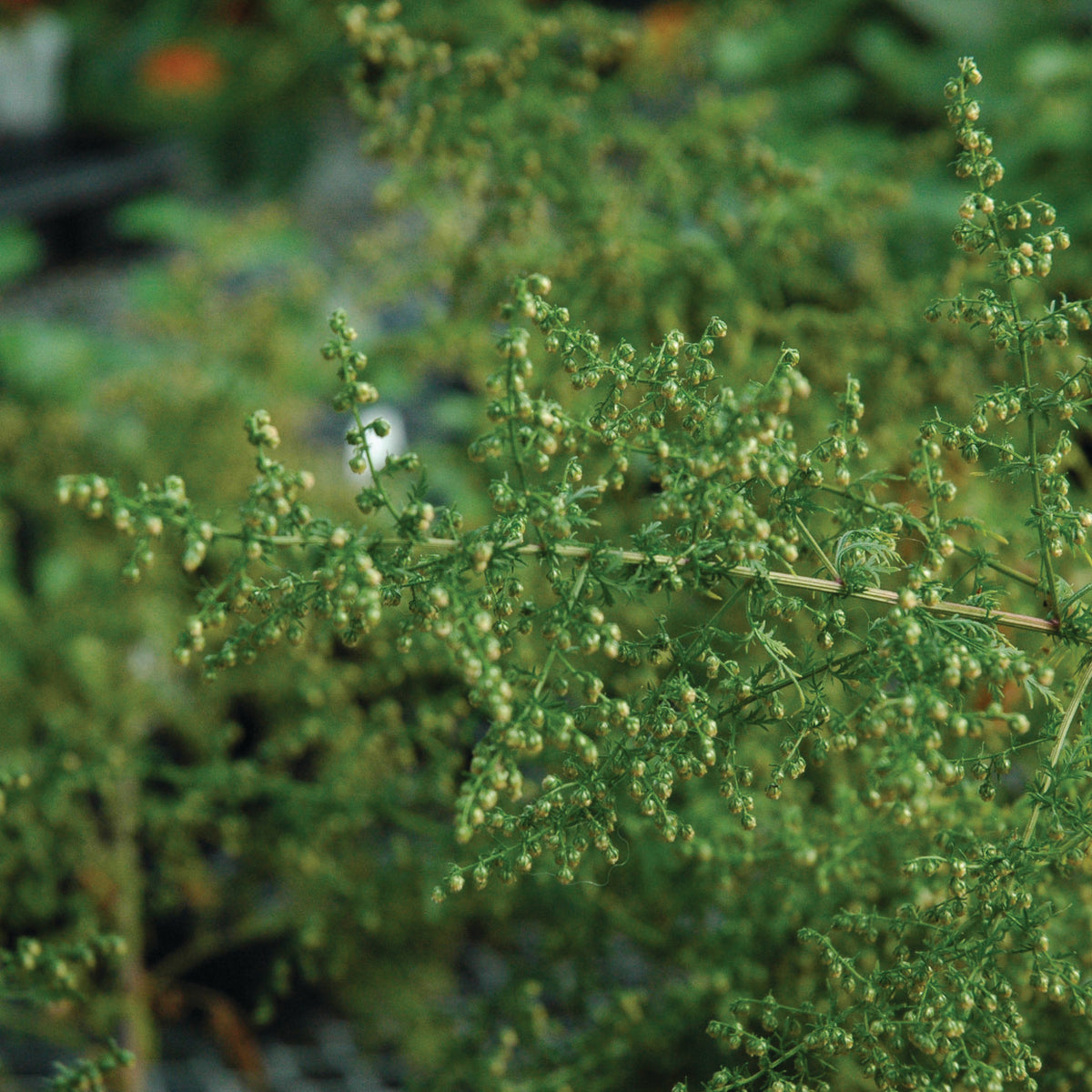Sweet Annie herb plant, with its distinct aroma and versatile applications, takes center stage as we delve into its botanical overview, medicinal and culinary uses, and cultivation practices. Prepare to be captivated by the fascinating world of this remarkable herb.
Native to Europe and Asia, Sweet Annie (Artemisia annua) is a member of the daisy family, boasting fern-like leaves, clusters of tiny yellow flowers, and a robust root system. It thrives in well-drained soil, prefers full sun to partial shade, and exhibits hardiness in zones 4-9.
Botanical Overview of Sweet Annie Herb Plant
The Sweet Annie herb plant (Artemisia annua), also known as sweet wormwood, is a member of the Asteraceae family. It is a herbaceous annual plant that typically grows to a height of 2-6 feet. The plant has a slender, upright stem with numerous branches. The leaves are alternate, lance-shaped, and have serrated margins. The flowers are small and yellow, and they are arranged in clusters at the tips of the branches. The root system of the Sweet Annie herb plant is fibrous and shallow.
The Sweet Annie herb plant prefers to grow in well-drained, sandy loam soil with a pH of 6.0-7.0. It requires full sun to partial shade and can tolerate drought conditions. The plant is hardy to USDA hardiness zones 3-9.
Medicinal Properties
The Sweet Annie herb plant has been used for centuries in traditional medicine to treat a variety of ailments, including malaria, fever, and diarrhea. The plant contains a number of active compounds, including artemisinin, which is a powerful antimalarial drug. Artemisinin is also effective against other parasites, such as those that cause schistosomiasis and leishmaniasis.
Medicinal and Culinary Uses of Sweet Annie

Sweet Annie, also known as Artemisia annua, is a versatile plant with a rich history of medicinal and culinary applications. Traditional herbalists have long valued Sweet Annie for its purported health benefits, particularly for digestive issues, respiratory problems, and skin conditions.
Medicinal Uses
In traditional medicine, Sweet Annie has been used to alleviate digestive ailments such as indigestion, gas, and bloating. Its purported antispasmodic properties are believed to relax the digestive muscles, reducing discomfort and promoting healthy digestion. Sweet Annie has also been traditionally employed to address respiratory issues, including coughs, colds, and asthma. Its expectorant and decongestant properties are thought to help clear mucus and improve breathing. Additionally, Sweet Annie has been used topically to treat skin conditions such as eczema and psoriasis. Its anti-inflammatory and antibacterial properties are believed to soothe irritated skin and promote healing.
Culinary Uses
Beyond its medicinal applications, Sweet Annie also finds use in the culinary world. The plant’s leaves and flowers impart a sweet, slightly bitter flavor that complements a variety of dishes. Sweet Annie is commonly used as a flavoring agent in teas, soups, and salads. Its unique flavor profile adds a subtle complexity to these dishes, enhancing their overall taste and aroma.
Potential Side Effects and Contraindications
While Sweet Annie is generally considered safe for consumption, it is essential to be aware of its potential side effects and contraindications. Excessive consumption of Sweet Annie may lead to gastrointestinal upset, including nausea, vomiting, and diarrhea. Individuals with allergies to plants in the Asteraceae family, such as ragweed or daisies, should exercise caution when using Sweet Annie. Pregnant and breastfeeding women should avoid consuming Sweet Annie due to insufficient safety data. It is always advisable to consult a healthcare professional before using Sweet Annie for medicinal purposes.
Cultivation and Propagation of Sweet Annie

Growing Sweet Annie is relatively easy, and it can be cultivated in various climates. Whether starting from seeds or cuttings, the process is straightforward.
Starting from Seeds
- Sow the seeds in well-drained soil during spring or fall.
- Space the seeds about 6 inches apart.
- Water the seeds regularly, keeping the soil moist but not soggy.
- The seeds will germinate in 10-14 days.
Starting from Cuttings
- Take cuttings from healthy Sweet Annie plants in the spring or summer.
- The cuttings should be about 4-6 inches long.
- Remove the leaves from the bottom of the cuttings.
- Dip the cuttings in rooting hormone and plant them in a pot filled with well-drained soil.
- Keep the cuttings moist and in a warm place.
- The cuttings will root in 2-3 weeks.
Planting and Care
Once the Sweet Annie plants have established, they require minimal care. They prefer well-drained soil that is rich in organic matter. The plants should be watered regularly, but avoid overwatering. Sweet Annie prefers full sun but can also tolerate partial shade.
Harvesting and Drying, Sweet annie herb plant
Sweet Annie can be harvested throughout the growing season. The leaves and flowers can be used fresh or dried. To dry the leaves and flowers, cut them from the plant and hang them upside down in a warm, dry place. Once the leaves and flowers are dry, they can be stored in an airtight container for later use.
Pests and Diseases
Sweet Annie is relatively pest- and disease-resistant. However, it can be susceptible to aphids, spider mites, and whiteflies. These pests can be controlled with insecticidal soap or neem oil. Sweet Annie can also be affected by powdery mildew and botrytis. These diseases can be controlled with fungicides.